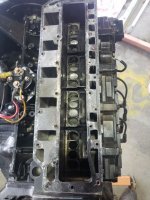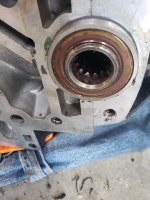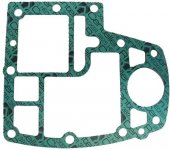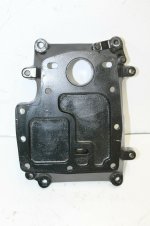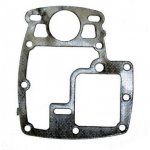I had a 90 that is basically the same with one less cylinder.
My problem with water getting into the bottom cylinder was the wrong gasket installed when the motor was changed.
The correct gasket has a definite block from the old water entrance in the bottom front of the water log.
The cooling water for the sport jet comes in the hose in the back of the exhaust cover.
If the wrong gasket is installed water will leak under the block and into the bottom of the exhaust chamber, filling the lower cylinder with water.
What I did before I pulled the engine was to fill the 3/4" hole in the front corner in the front water jacket with JB weld. Water goes through this hole and into the space under the block and from there up into the exhaust.
The first gasket shown is the wrong one that is open from that 3/4" hole to the bottom of the exhaust.
The base plate does not have a passage for cooling water like the outboard.
The correct gasket has that hole completely surrounded and should stop that water flow, unless it has been damaged or has failed from age and heat.
As I said I filled that 3/4 hole with JB weld and put in the correct gasket.
Some people say that you have to start the engine before starting cooling water, but this only puts exhaust pressure on the manifold. I can start water and run a pretty high flow and have not had problems with water in the cylinder since changing the gasket and filling that hole.




















